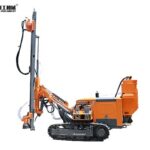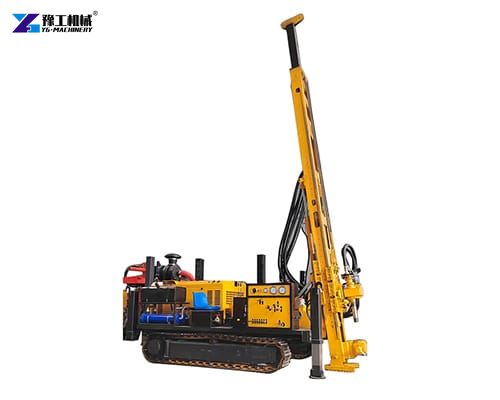HDD rig, also commonly referred to as a horizontal directional drilling rig, is a powerful, sophisticated machine engineered to create precisely controlled bore paths underground without the need for continuous open trenches. Horizontal directional drilling machine drills a pilot hole along a predetermined design path, then progressively enlarges this hole through reaming passes to the required diameter. Finally, the product pipe or conduit is pulled back through the enlarged bore, completing the installation. The HDD machine provides the necessary thrust rotational torque and pullback force to accomplish these tasks efficiently and accurately.
Advantages of Using A Horizontal Directional Drilling Machine
- Minimal Surface Disruption
HDD rigs eliminate the need for extensive excavation, preserving landscapes, roads, and existing infrastructure. This is particularly critical in urban areas, historical sites, and environmentally protected zones. - Enhanced Safety
By reducing open trenches, HDD technology lowers the risk of accidents, injuries, and workplace hazards. Operators work in controlled environments, away from traffic and unstable excavation pits. - Environmental Friendliness
HDD drilling generates less noise, dust, and carbon emissions compared to conventional methods. The closed-loop mud system also prevents contamination of soil and water bodies.
How Do HDD Rigs Work?
The HDD process involves three primary stages: pilot boring, reaming, and pullback. Each stage is critical to ensuring the success of the project.
- Pilot Boring
The operation begins with the drilling of a small-diameter pilot hole along the planned path. Operators use the guidance system to steer the drill head, adjusting the angle and direction to navigate around obstacles or follow a predefined curve. This stage establishes the precise trajectory for the final installation. - Reaming
Once the pilot hole is complete, the drill string is removed, and a reamer tool is attached. The reamer enlarges the hole to the required diameter, gradually increasing the size in stages. Drilling fluid continues to circulate, removing debris and stabilizing the borehole walls. - Pullback
In the final stage, the product pipe or conduit is attached to the reamer. The drill string is pulled back through the enlarged borehole, simultaneously installing the infrastructure. This method ensures minimal disturbance to the surface and surrounding environment.
Applications of HDD Machines
Telecommunications and Fiber Optics
Ideal for installing high-speed fiber networks in densely populated areas without disrupting traffic or existing utilities.
Water and Sewer Lines
Used to install pipelines under roads, rivers, and existing structures, reducing the need for open trenches.
Oil and Gas Pipelines
Suitable for long-distance pipeline installation, especially in environmentally sensitive areas.
Electric Power Cables
HDD rig allows underground installation of power lines with minimal environmental disturbance.
Railway and Highway Crossings
Enables utility installation across transportation corridors without interrupting services.
Maintenance and Safety Considerations
Routine Inspections
Daily checks on hydraulic systems, mud pumps, drill strings, and control systems help prevent unexpected breakdowns.
Proper Mud Management
Drilling fluid must be properly mixed, circulated, and disposed of to avoid environmental contamination and equipment damage.
Operator Training
Skilled operators are essential for safe and efficient operation. Training should include machine controls, emergency procedures, and bore path planning.
Use of Personal Protective Equipment
Operators and crew members should always wear appropriate safety gear, including helmets, gloves, and protective footwear.
Emergency Preparedness
Projects should include contingency plans for underground obstructions, equipment failure, or fluid loss.



